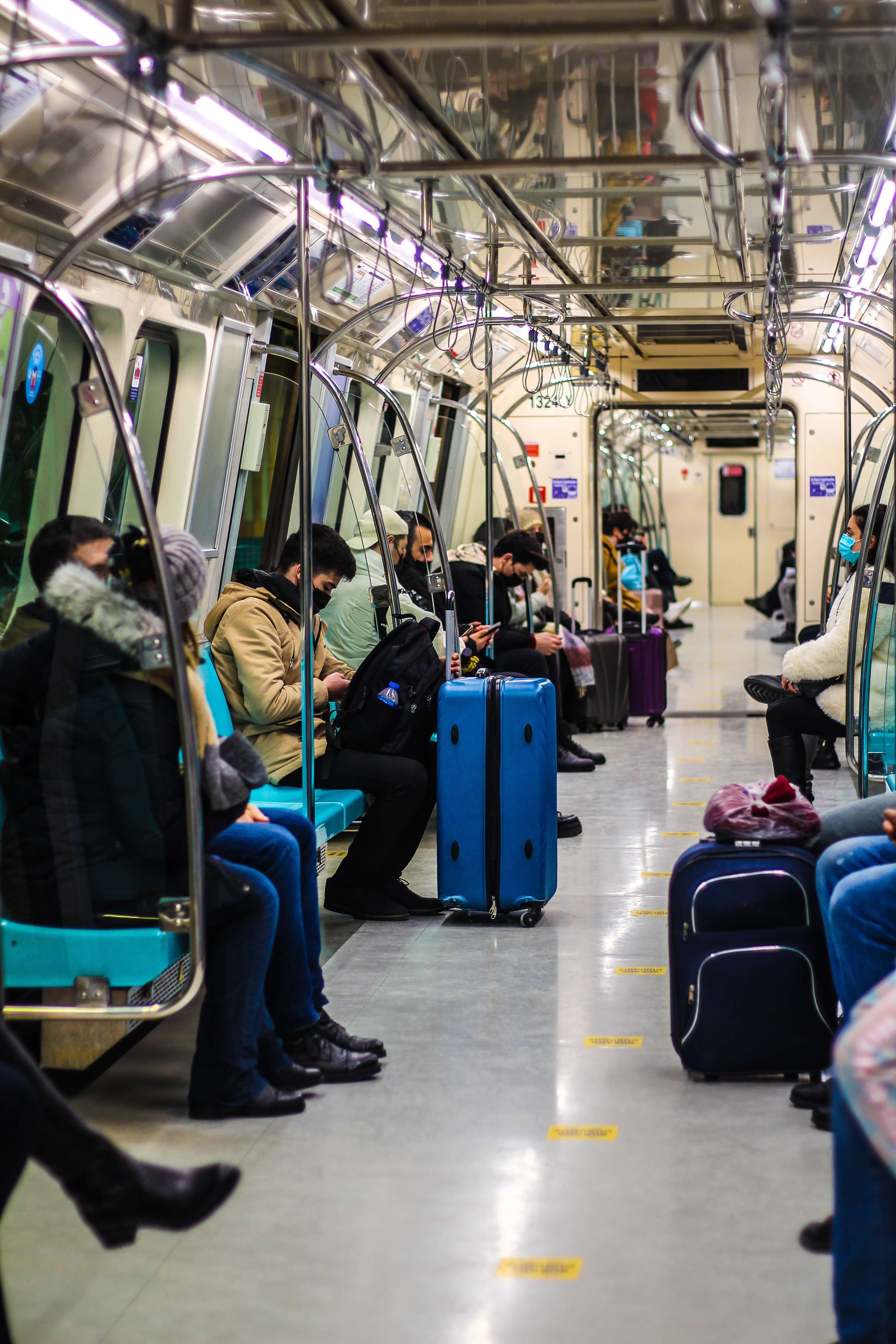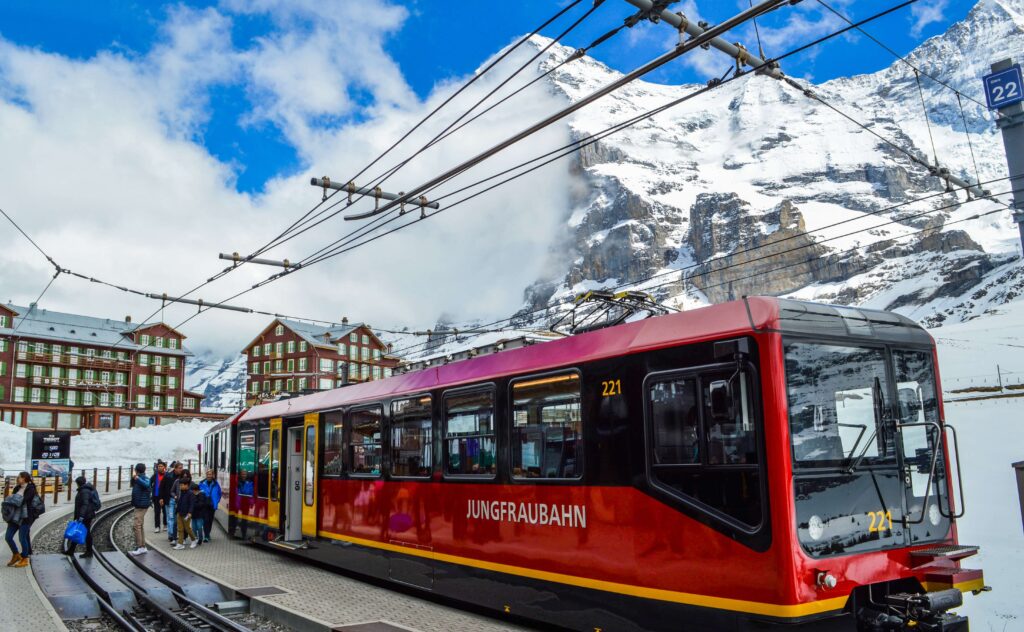Many tourists have the desire to take a train throughout Europe, but you need a Europe train trip planner.
It is the best method to tour the continent due to its beautiful scenery, extensive cultural legacy, and excellent connections.
To ensure a seamless and enjoyable experience, thorough planning and organization are necessary while taking a rail vacation around Europe. A thorough rail journey planner can help with that.
We will cover helpful tips, knowledge, and resources to help you plan the perfect trip.
It’s not only about going from point A to point B when planning a train trip throughout Europe; it’s also about meeting locals, tasting their cuisine, and creating lifetime memories.
You can use a train on your holiday to Romania and do have a nice vacation.
Researching Destinations
One of the most exciting aspects of arranging a rail journey around Europe is learning about the amazing places that lie in wait. Every city and region has something special to offer, a fascinating cultural background, and a unique charm. To efficiently study and choose the locations for your trip, follow these important steps:
Identify Your Interests
Think about your preferences and areas of interest first. Are you more attracted to historical monuments, bustling cities, beautiful landscapes, or a mix of these? You may focus on the places that correspond to your interests by understanding your travel style.
Consider Cultural and Historical Significance
The history, art, and culture of Europe are incredibly rich. Investigate each location’s cultural history and historical importance. Think of visiting UNESCO World Heritage sites, renowned museums, architectural wonders, and iconic locations that represent the area.
Check Local Events and Festivals
Europe is renowned for having exciting festivals and events all year round. Check to see if any significant arts, music, or food festivals fall around the time you plan to go. A distinctive and comprehensive cultural experience may be had by participating in these vibrant festivals.
Consider Accessibility and Proximity
Consider how close the locations you’re interested in are to one another. Europe has a good train system that makes traveling between cities straightforward, although you may wish to organize your route to minimize travel time. To make the most of your trip, think about combining nearby destinations.
Read Travel Guides and Blogs
Consult travel manuals, websites, and blogs devoted to exploring Europe. These resources include insightful information, suggestions, and first-hand accounts from other travelers. Look for advice on off-the-beaten-path sites, recommendations for itineraries, and destination-specific information.
Seek Recommendations
Speak with friends, relatives, or other travelers who have been to Europe. Their recommendations can offer insightful advice and direct you to lesser-known treasures that may be hidden jewels.
Create a Shortlist
Make a selection of locations that fit your interests, time limits, and money based on your research. Give the locations that fit best into your overall itinerary and that speak to you the greatest priority.
Keep in mind that the research period is an exciting chance to explore a diverse array of European places. Accept the journey, let curiosity lead the path, and be open to finding hidden gems along the road.

Selecting Destinations and Route
It’s time to make some crucial decisions on the choice of specific locations and the route you will take during your rail trip after doing extensive study on a variety of European destinations. Here are the essential stages to choosing the ideal locations and planning an effective and entertaining route:
Prioritize Your Must-Visit Places
Go over your short list of places and give the ones you can’t miss the highest priority. Take into account your individual preferences, life goals, and the distinctive experiences each location has to offer.
Consider Travel Duration
While some cities can be explored in less time, others may take a longer time to investigate. Achieve equilibrium between the number of places you wish to see and the amount of time you have.
Evaluate Transportation Options
Find out how to get by rail between the places on your list. Look into the train’s availability, frequency, and travel times. Think about if you’ll need to take a regional, fast, or overnight train to get where you’re going. Make sure the available transportation alternatives suit your needs and fit into your timetable.
Create a Logical Itinerary
Make a reasonable schedule based on your preferred locations, travel time, and proximity to other locations. Consider factors like the opening and closing times of the sites, the availability of guided tours, and any specific events or festivals you wish to attend when choosing which destinations to visit first. Making the most of your time at each destination will be made possible by your efficient daytime planning.
Allow for Flexibility
While having a planned agenda is necessary, it’s also crucial to provide room for flexibility. Allow time for unforeseen discoveries and unplanned diversions. Be open to changing your plans in response to advice from locals or other travelers you encounter along the road, and embrace the serendipity of travel.
Seek Advice from Experienced Travelers
Speak with seasoned travelers, check out travel discussion boards, or join online groups for European rail travel. Ask for input from people who have taken similar travels to gain insights on your suggested route and itinerary. Their first-hand knowledge may provide priceless advice and suggestions.
Consider Travel Passes
If you want to travel extensively within a single region or across numerous countries, you should consider how simple and affordable it is to get travel permits. You may travel by train across Europe with flexibility and financial savings with the Eurail and Interrail passes. Check the validity and coverage of several passes to determine whether they correspond with your desired itinerary.
Refine and Fine-Tune Your Itinerary
Refine and fine-tune your itinerary after taking into account all the variables and getting feedback. Any essential changes should be made to provide a balanced and pleasurable experience. Consider practical factors like the availability of lodging and the capacity of attractions during the high season.

Setting a Budget
Establishing a realistic budget is crucial when organizing a train trip through Europe to make sure that your travel costs are in line with your available funds.
Assess your financial resources.
Before calculating how much money you have left over for your vacation, evaluate your financial status. Consider your income, savings, and any extra resources you may have. Consider how much you can spend responsibly without jeopardizing your financial security.
Identify major expense categories.
Divide up your travel costs into the main areas of travel, such as lodging, meals, activities, and other costs. You can arrange your budget more wisely if you do this.
Research Average Costs
Do some research on the typical expenses for the places you want to go. Examine the costs of train tickets, lodging choices, eating alternatives, and well-known attractions. Given that rates might vary based on the time of year, take into account both the busy and slow seasons.
Consider currency exchange rates.
If you’re coming from a place where the currency is different, take exchange rates into account. Exchange rate fluctuations might have an influence on your budget, so keep an eye on them and make plans appropriately.
Prioritize your experiences.
Decide what matters most to you about your vacation, and then devote a larger amount of your cash to it. For instance, if seeing well-known locations is your top priority, budget more money for admission costs or guided tours.
Research cost-saving options.
To stretch your budget further, look for cost-cutting measures. Think about choosing more affordable lodging options like hostels, eating at inexpensive restaurants instead of nearby ones, or taking advantage of cheap or free activities and attractions. If buying a rail pass results in cost savings over buying individual train tickets, do so as well.
Allow for souvenirs and personal splurges.
Don’t forget to set aside money from your budget for trinkets and pleasures for yourself. Setting aside money for these extras will improve your vacation, whether you use it to purchase local goods, indulge in a great dinner, or partake in novel experiences.
Be Flexible
Budgeting is crucial, but you should also be ready to be adaptable. On occasion, unanticipated events or circumstances could require you to change your spending plan. You can adjust to changes while still keeping within your total budget by having a flexible mentality.
Recall that having a budget for your rail trip around Europe enables you to make wise choices and have a stress-free journey. You can maximize your trip while preserving your financial security by paying attention to your expenditures and setting priorities.

Understanding the Rail Network
Planning a train trip around Europe requires careful consideration of how to use the rail system. The broad and effective rail network in Europe connects big cities, small villages, and even isolated areas. You may make well-informed choices, plan your trip more efficiently, and take pleasure in a smooth ride if you are aware of how the train network works. To better comprehend the European rail system, consider the following crucial points:
Extensive Coverage
The rail system in Europe is renowned for its broad coverage, linking nations all across the continent. On a huge network of lines, high-speed trains, regional trains, and overnight trains run, providing convenient transit alternatives to many locations.
Centralized Stations
Centralized railway stations that act as transportation hubs may be found in the majority of Europe’s major cities. It is usually easy to reach your intended locations from these stations because they are frequently well-connected to other transit options, including buses, trams, and metro systems.
Multiple Railway Companies
The rail system in Europe is made up of several railroad firms that run in various nations or areas. Each organization may have its timetables, price plans, and ticketing system. When organizing your journey, it’s crucial to become familiar with the pertinent train firms and their offerings.
High-Speed Trains
Between large cities and nations, high-speed trains like the Eurostar, TGV, and ICE provide quick and effective transportation. These trains offer a pleasant way to travel long distances in a manageable amount of time and are furnished with contemporary conveniences.
Regional and local trains
These trains provide an opportunity to see the local culture and landscape along the journey and are frequently more economical. They could follow more lenient schedules, enabling impromptu travel and exploration.
Rail Passes
For tourists who want flexibility and convenience when traveling extensively within a single area or across many, train passes like Eurail and Interrail are available. These passes provide a range of alternatives based on your travel requirements and allow for unrestricted rail travel throughout the allotted time. Look at the many passes that are offered and decide whether they fit your schedule and budget.
Timetables and schedules
You must become familiar with railroad timetables and schedules to effectively organize your trip. Timetables are available at train stations and online. To guarantee a seamless transition between locations, pay attention to departure times, travel periods, and connections between trains.
Seat Reservations
Seat reservations are necessary on certain trains, notably overnight and high-speed trains, but open seating is permitted on others. A reserved seat or sleeping berth ensures that you will have one for the duration of your trip. If reservations are necessary for your preferred train, confirm them beforehand, especially during peak travel times.
International Connections
With the help of Europe’s train system, you can easily travel across borders and visit several nations at once. To travel across foreign borders, you may need a passport or a visa, so be aware of any special paperwork needs. Plan your route and give yourself plenty of time for transfers by researching the rail links between nations.
Travel apps and resources
Use the websites, apps, and other tools designed specifically for European rail travel. These websites provide ticket purchases, real-time updates, and access to the latest railway timetables. They may be quite useful resources for navigating the rail system and keeping you updated all the way there.
Understanding the European rail system will enable you to plan your journey more effectively, make educated decisions, and take a comfortable train across the continent. You’ll be ready to start your European trip if you are familiar with the network’s numerous features.

Planning the Itinerary as a Europe train trip planner
An effective Europe rail vacation requires planning an itinerary that is both well-structured and well-balanced. It enables you to maximize your time, go to the places you want to see, and take in all of Europe’s many cultures and attractions.
Establish Your Priorities
Decide which places and activities you absolutely must experience first. Take into account your hobbies, whether they are in historical places, beautiful scenery, cultural activities, or delectable cuisine. This will help you successfully manage your time and set priorities for your calendar.
Determine the Duration of Your Trip
Determine how much time you have to spend traveling by rail around Europe. Think about things like financial limitations, travel limits, and professional or personal responsibilities. This will enable you to estimate your journey’s overall length.
Research Travel Times
Utilize the train timetables to research the journey times between your preferred locations. Consider the distances between cities, taking into consideration any overnight rail trips. Consider any connections or layovers, as well as the time it takes to check into and out of your accommodation.
Optimize Geographical Proximity
To cut down on travel time, group places that are near together. Plan an effective route between cities after taking into account the areas you want to explore. This will enable you to maximize your time and minimize pointless detours.
Research Opening Hours and Holidays
Verify each location’s monuments, museums, and attractions’ hours of operation. Keep in mind any holidays or particular closing days that may have an impact on your visit. To ensure you have sufficient time to explore each location, adjust your schedule appropriately.
Incorporate Flexibility
It’s crucial to build some flexibility into your schedule. Allow time for unplanned activities, local advice, or unforeseen discoveries along the journey. Accept the chance to change your plans as you go since these unanticipated events frequently lead to the most unforgettable experiences.
Allocate Time for rest
Despite the temptation to fill your day with activities, schedule time for rest. Traveling may be exhausting, so taking steps to recharge can help you stay energized the entire way. To balance your schedule, think about integrating leisurely activities or adding relaxation in beautiful locales.
Consult Travel Resources
Make use of online resources, blogs, and travel guides focused on Europe. These sites offer insightful information, suggested routes, and insider advice from seasoned travelers. To help you plan your schedule, research well-known sights, hidden treasures, and off-the-beaten-path locations.
Review and Fine-Tune
Once you’ve written down your itinerary, critically evaluate it and make any required changes. Take into account the time allotments, the general flow, and any potential voids or overlaps. Make sure your schedule accommodates a diverse experience and represents your choices.
Always bear in mind that the purpose of planning an itinerary is to give your trip structure while allowing for spontaneity and flexibility. With a well-thought-out schedule, you can make the most of your rail vacation around Europe and accumulate priceless memories and amazing experiences.

Safety and Practical Tips
Prioritizing safety and taking practical precautions are vital while traveling by rail around Europe to guarantee a comfortable and pleasurable vacation. Following is some practical and safety advice:
Secure Your Belongings
Throughout your travels, keep your possessions safe and secure. For your baggage, choose a strong and trustworthy travel lock, and think about getting a compact cross-body bag or money belt to hold your essentials while you’re out and about. Be aware of your surroundings and refrain from exhibiting pricey products or significant amounts of cash.
Stay Alert and Vigilant
On trains and in railway stations, be on the lookout. Pay attention to your surroundings, particularly in busy places, and exercise caution around potential frauds or pickpockets. Always keep a watch on your possessions, and alert the proper authorities to any questionable activity.
Research Local Customs and Laws
Learn about the traditions and regulations of the nations you will be visiting. Recognize the customs, etiquette, and any particular cultural expectations in the area. To promote great interactions with locals and prevent any inadvertent misunderstandings, respect local norms.
Keep Important Documents Safe
Keep physical copies apart from the originals and save electronic copies in a safe cloud storage provider online. This will make replacement easier in the event of loss or theft.
Be Mindful of Train Safety Procedures
Learn the safety protocols and regulations that apply to trains. Pay close attention to any safety instructions given by the railway crew, emergency exits, and evacuation routes. Learn about the security elements of sleeping cabins or compartments before an overnight trip.
Plan for Emergencies
Learn the emergency protocols and the locations of the closest hospitals and medical facilities in each place. Carry a first aid pack that contains the absolute necessities, such as bandages, analgesics, and any prescription drugs that may be required. To cover any unplanned crises or medical costs, buy travel insurance.
Stay Informed
Keep abreast of weather forecasts, travel warnings, and any potential rail service interruptions. Use travel applications that offer real-time updates or sign up for notifications from the appropriate transit authorities. As a consequence, you’ll be in a better position to decide wisely and modify your plans as required.
Respect Train Etiquette
On your train trip, be mindful of other people. Reduce the amount of noise you make, don’t crowd the area with your stuff, and respect any designated quiet areas. To guarantee a comfortable and peaceful journey for everybody, adhere to the directions and rules given by the train crew.
You may improve your rail travel around Europe and guarantee a safe and pleasurable vacation by paying attention to this safety and practical advice. Always put your health first, keep yourself educated, and show respect for regional traditions and laws. With the knowledge that you’ve taken the essential steps for an unforgettable experience, embrace the adventure with assurance.


Conclusion
It may be fun and satisfying to plan a rail vacation around Europe. You may plan a comprehensive schedule that enables you to see the many landscapes, cultures, and tourist sites that Europe has to offer by following the instructions provided in this guide.
Setting a budget, choosing useful textiles, researching potential sites, and comprehending the rail system are all important steps in making a trip effective and enjoyable.
Throughout your journey, keep safety in mind. You can guarantee a pleasant and worry-free trip by being alert, protecting your valuables, and becoming knowledgeable about regional traditions and regulations.
Take practical steps to communicate clearly and efficiently, such as protecting sensitive papers and remaining connected.
Enjoy the freedom that traveling by rail provides. Even though it’s crucial to prepare your agenda, leave room for last-minute changes and unplanned events.
Unexpected discoveries and encounters with locals often lead to the most memorable experiences.
What are your thoughts on the Europe train trip planner? We want to hear from you.
Why book with Viator.com? Do more with Viator
For Top Destinations! Top Attractions! Top Tours. Just get the best out of Viator today.

Ivisa.com helps you find Visa information for all countries.
Simplifying Travel Around The World and also offers Online Travel Visa Checks.

I recommend Booking.com because is a great place for hotel bookings with No Booking Fees. Low Rates. Best Price Guarantee.

Trip.com is another good website where you can make your flight bookings with Low-cost flights and easy booking with Instant confirmation.

we could receive a little commission. if you purchase after clicking one of our links. This helps us to maintain the website, and we sincerely appreciate it.

